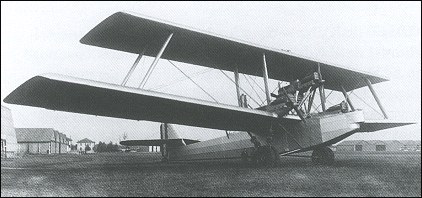| Terrence Murphy, e-mail, 03.02.2012 23:44 A six-engined inverted sesquiplane, the Caproni Ca.90 was designed as a heavy bomber and first flew in 1929. It had two tandem pairs of 1,000 hp (746 kW) Isotta-Fraschini Asso inline piston engines mounted above the lower wing; each pair drove a four-bladed pusher and a two-bladed tractor propeller.[1] Another pair of engines was mounted above the fuselage. Only one Ca.90 was built. Although the Dornier Do X flying boat that flew later in 1929 had a larger wingspan and weight it remained the largest landplane until the arrival of the Tupolev ANT-20 in 1934.
General characteristics
• Length: 26.95 m (88 ft 5 in)
• Upper wingspan: 34.90 m (114 ft 6 in)
• Lower wingspan: 46.60 m (152 ft 11 in)
• Height: 10.80 m (35 ft 5 in)
• Wing area: 496.60 m2 (5,345.4 sq ft)
• Empty weight: 15,000 kg (33,069 lb)
• Max takeoff weight: 30,000 kg (66,139 lb)
• Powerplant: 6 × Isotta-Fraschini Asso inline piston engine, 750 kW (1,000 hp) each
Performance
• Maximum speed: 205 km /h (127 mph; 111 kn)
• Endurance: 7 hours
• Service ceiling: 4,500 m (14,764 ft)
Armament
• Guns: defensive machine-guns
• Bombs: 8000kg reply |












20
reply